Earlier this month, The ABC’s Keane Bourke acknowledged that “Australia doesn’t have enough houses” and suggested that Australians let out their spare bedrooms to ease the rental crisis.
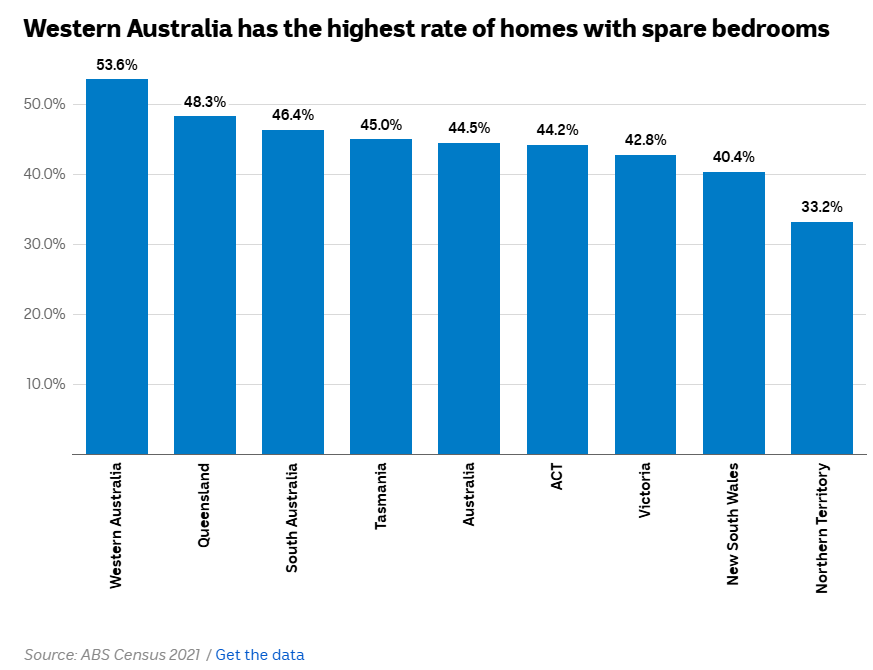
Bourke claimed that Australia would have the capacity “for about five million extra people” if these spare bedrooms were rented out.
Over the weekend, The ABC suggested that abandoned and empty homes should also be made available to ease the nation’s housing shortage.
“Australia is dotted with hundreds of thousands of these abandoned or empty homes and buildings”, the report stated. “Each is livable, to varying degrees”…
“The majority of these homes, according to ABS director of census data ventures Ross Watmuff, are in regional areas”…
“Some housing experts believe the unused dwellings could be the answer to Australia’s ongoing housing crisis”…
While there is undoubtedly merit in better utilising Australia’s housing stock, it does not address the underlying problem.
Australia’s population has ballooned by 8.5 million people this century on the back of record levels of net overseas migration.

This extreme population growth has created a shortfall between housing demand and supply.
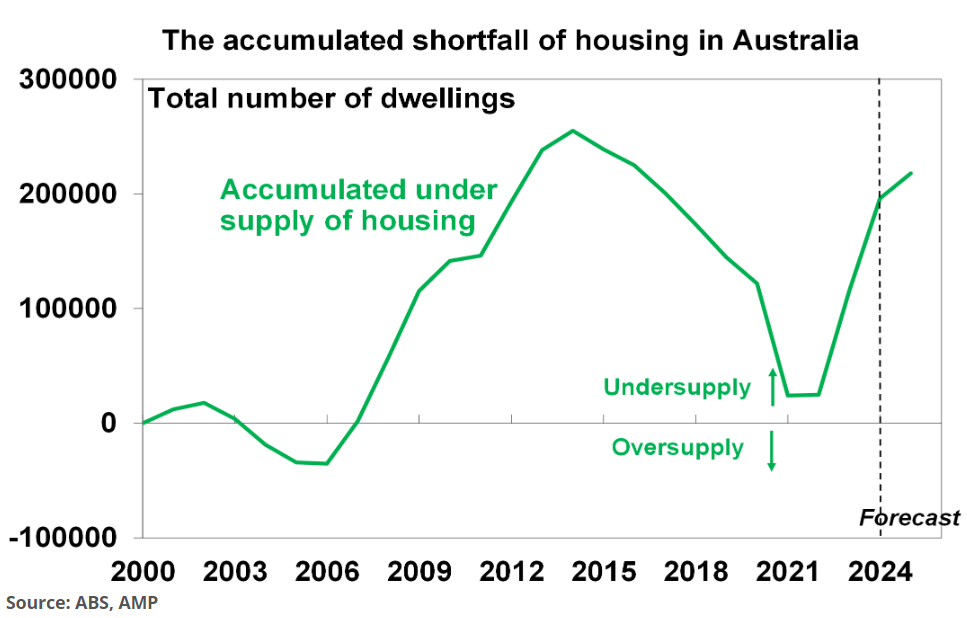
Australia’s population is officially projected to increase by 13 million over the next 39 years, which is equivalent to adding another Melbourne, Sydney, and Brisbane to the nation’s current population.
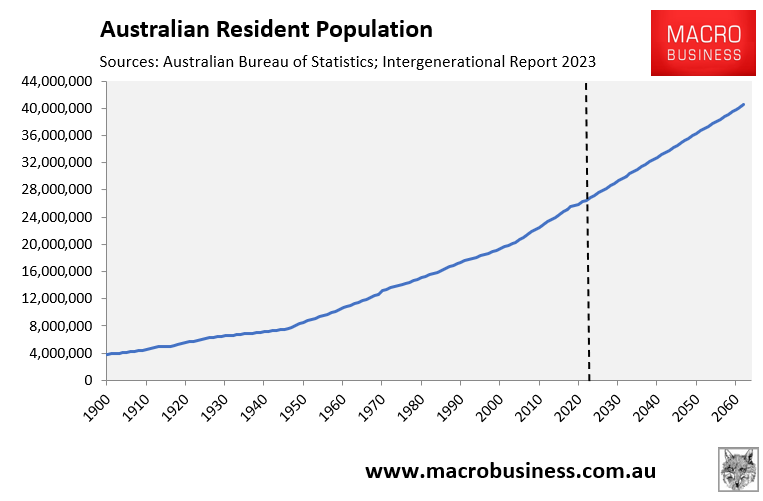
Australia’s capital city populations are also projected to more than double in size between 2001 and 2071, according to the Australian Bureau of Statistics.
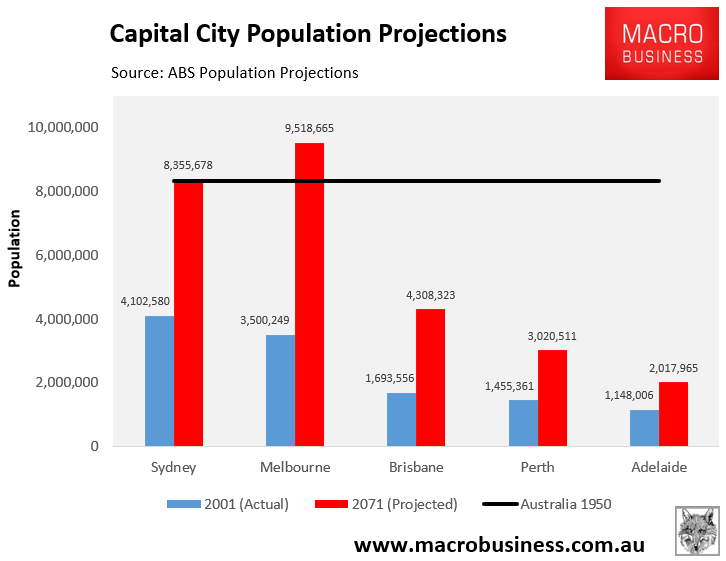
Clearly, the number one solution to Australia’s housing crisis is to dramatically slow the growth in the nation’s population by cutting net overseas migration.
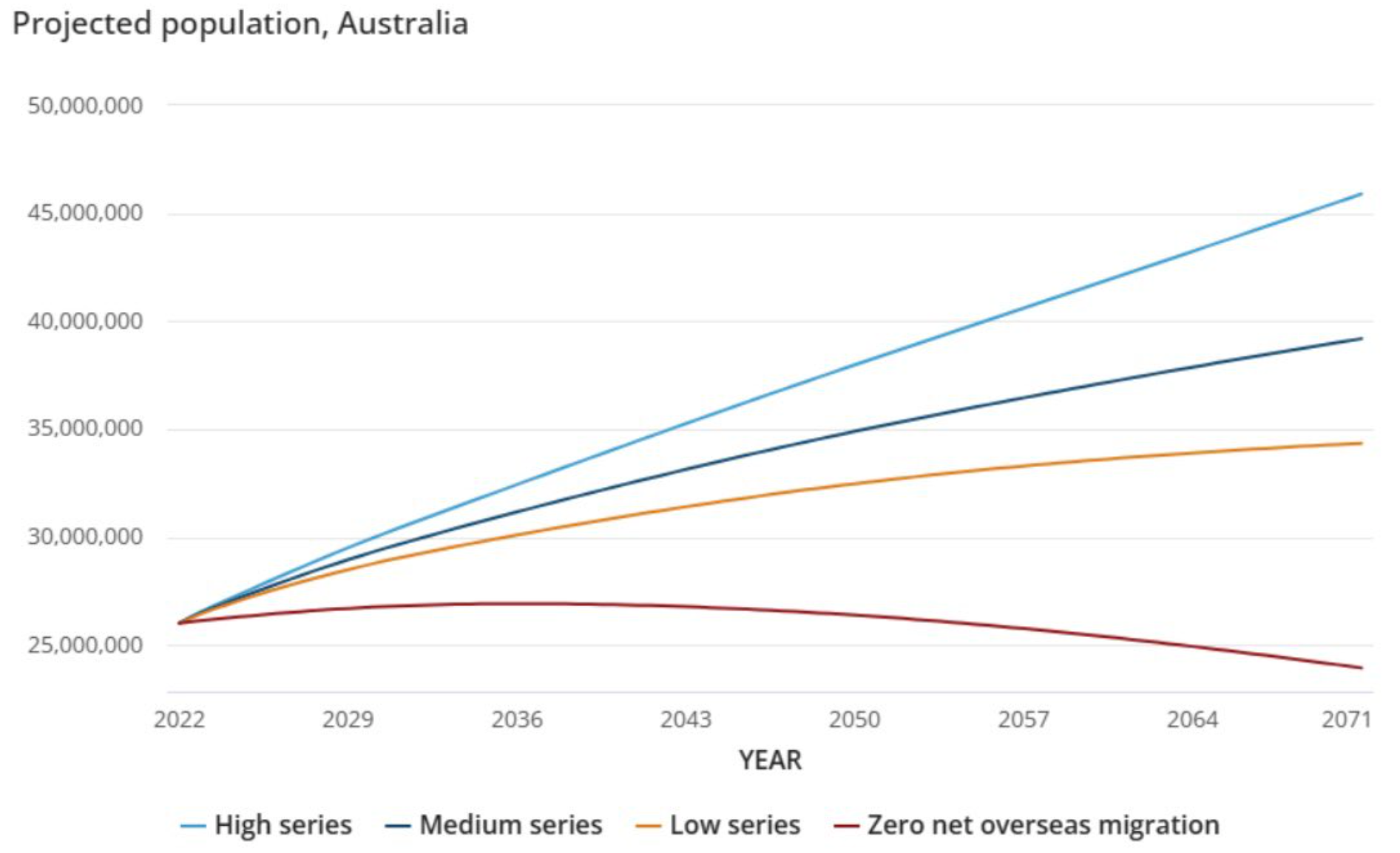
Source: Australian Bureau of Statistics
Excessive levels of immigration are causing the mismatch between housing demand and supply. It will also force future Australians to live in high-rise apartments rather than houses.
Australia suffers from an oversupply of population, not an undersupply of housing.

